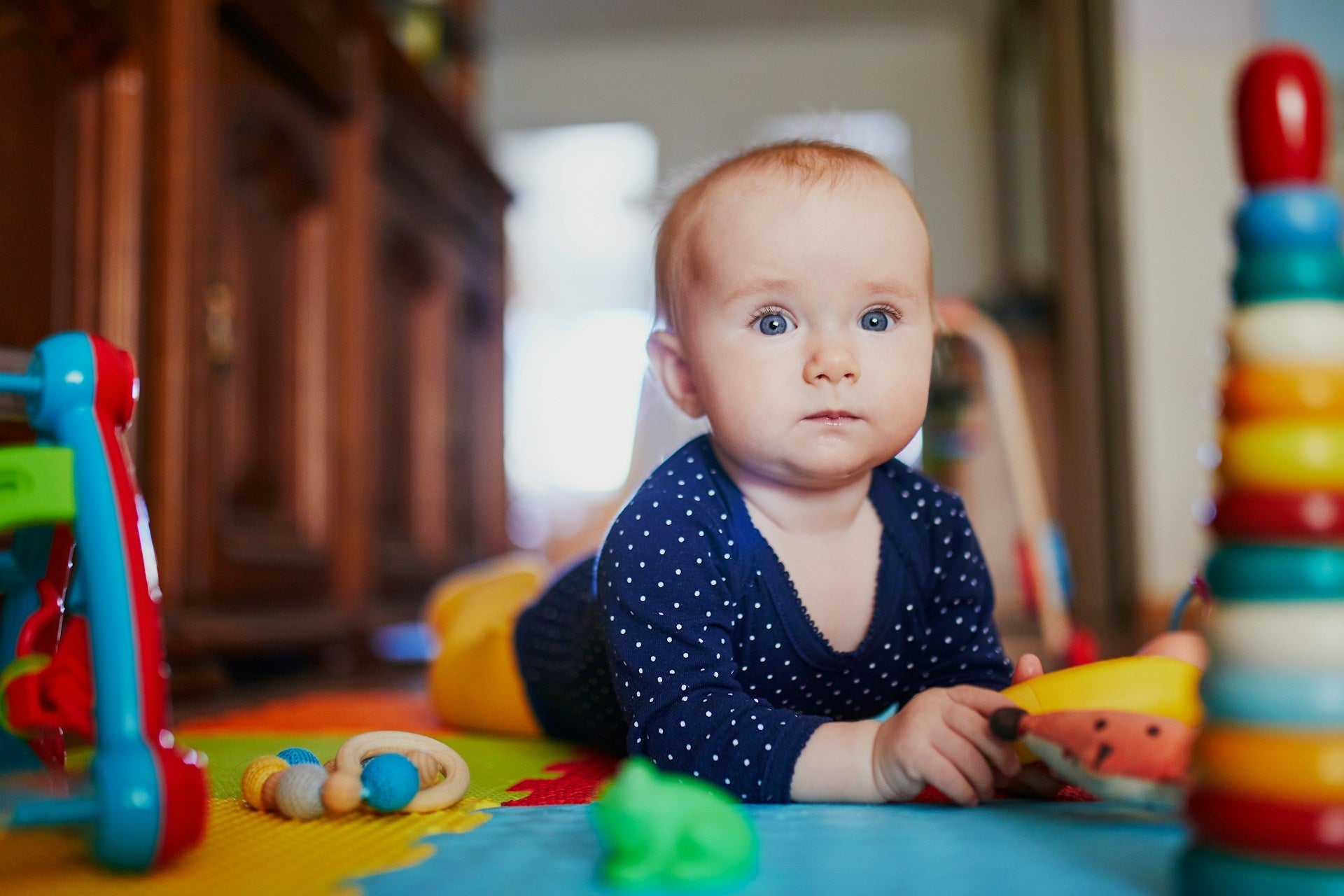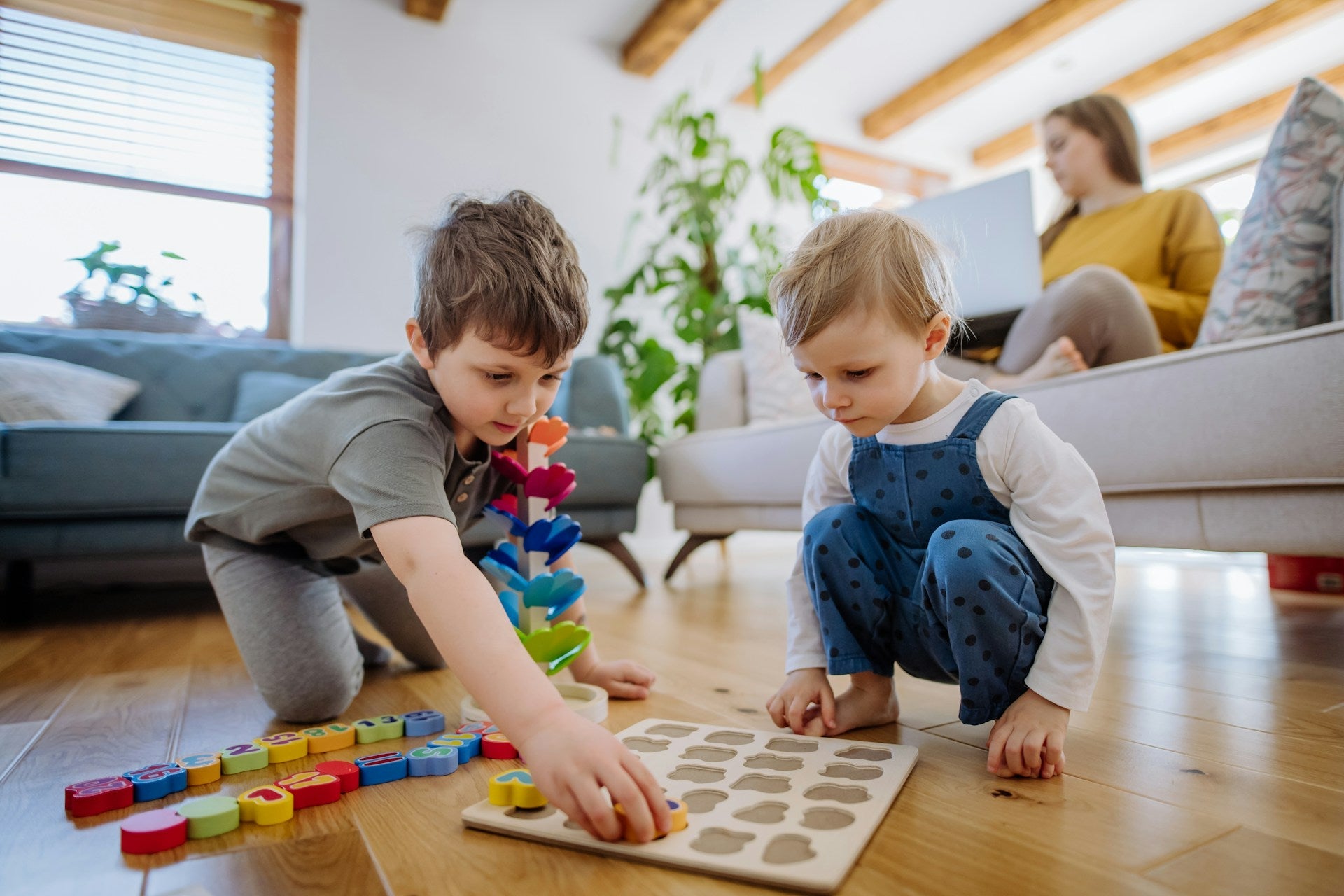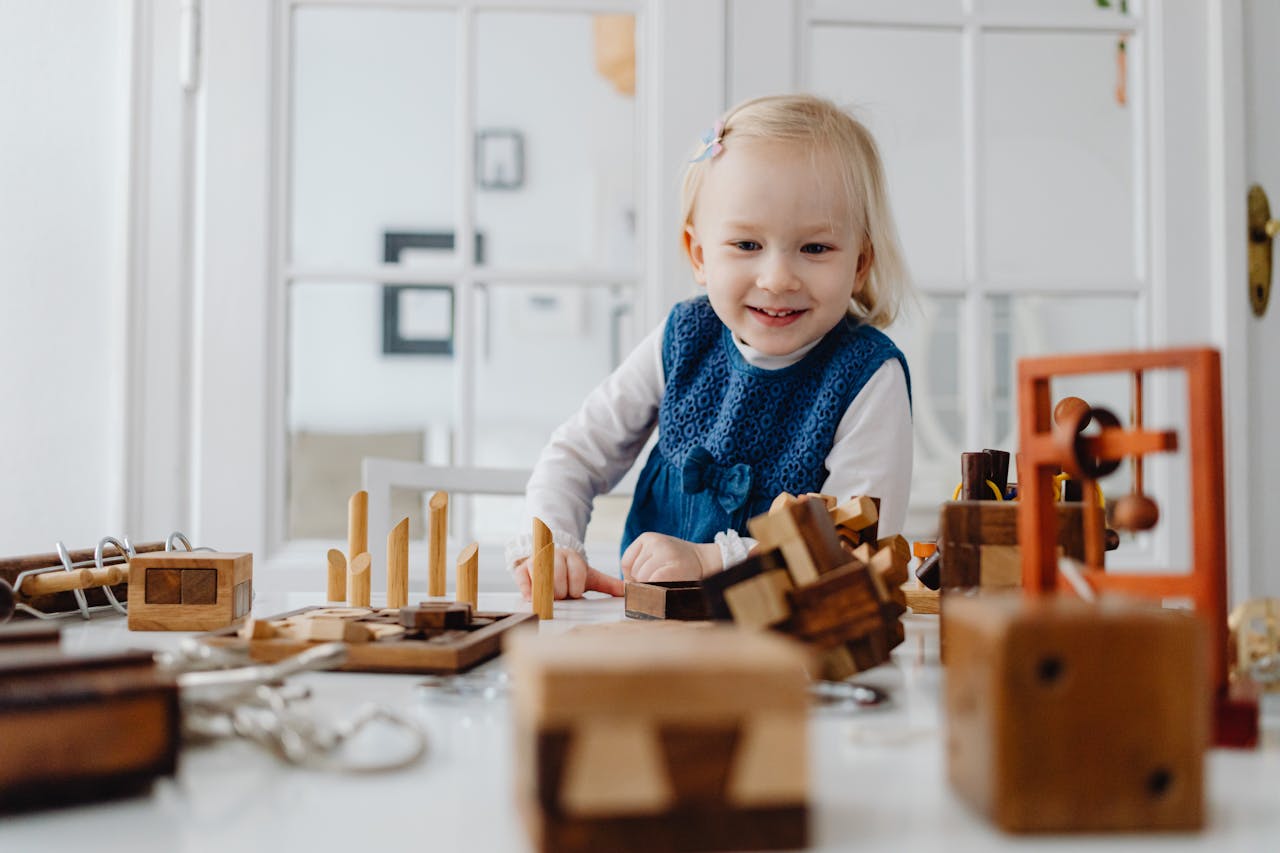Grasping Beads: A Montessori Essential for Developing Fine Motor Skills

The Montessori method has improved learning and development in even the youngest children. To provide your baby with Montessori from the start, you can offer a variety of Montessori materials that support their growth and give them opportunities for focus and concentration. Grasping beads are one of the most recognizable Montessori wooden baby toys, and with good reason. These tactile beads are beneficial for your young baby and have many advantages when used appropriately for your baby.
This beautiful and straightforward toy is usually made of four to five round beads with leather, cotton, or hemp cord knotted between each bead. You can also find some made with cube or diamond-shaped beads. While all of them can be used for grasping, the round beads are the most widely used. Although the beads are tied securely to the cord via knots between each bead, it is essential to supervise your baby when using this toy to be safe. Because the beads are tied onto a single cord, they can slide them from side to side between knots. This movement takes some coordination, so don't expect it right away. But, when your baby discovers that they can do this, they will engage their problem-solving skills and fine motor development.
One of the key developmental milestones around three months is the ability to grasp and release objects. While your baby can learn this skill independently, offering them the grasping beads supports their need for hand movement and they have the opportunity to practice this skill until they reach self-perfection, or when they feel confident in their skill level. The beads, tied onto flexible rope or cord, allow your baby to experiment with their grasp in numerous ways, promoting a sense of independence. This freedom of movement, unlike the limited motion of a more rigid construction, allows for a full range of hand motion when grasping the beads and the movement of the wrists and arms.
The beads and cord's natural texture offer the baby valuable sensory input as they explore each piece. They may explore the beads with their mouth, increasing their curiosity for this toy. They are also learning to pay attention to the details of things and smaller parts of a larger whole. You can let your baby hold the grasping beads and practice their grasp and release, as well as hand-to-hand transfer. You can also tie the beads to a ribbon or string in your baby's movement area to serve as a tactile mobile for them to grasp the beads from above, rather than on the ground. Batting at the beads and ultimately grabbing them will offer them great satisfaction, a joyous moment for both you and your baby.
Though this toy may seem simple, it offers your baby skills that motivate them to discover more. They support your baby's motor development and coordination, but let them do so independently. Like other Montessori materials, this toy captivates the interest of young babies.
This beautiful and straightforward toy is usually made of four to five round beads with leather, cotton, or hemp cord knotted between each bead. You can also find some made with cube or diamond-shaped beads. While all of them can be used for grasping, the round beads are the most widely used. Although the beads are tied securely to the cord via knots between each bead, it is essential to supervise your baby when using this toy to be safe. Because the beads are tied onto a single cord, they can slide them from side to side between knots. This movement takes some coordination, so don't expect it right away. But, when your baby discovers that they can do this, they will engage their problem-solving skills and fine motor development.
One of the key developmental milestones around three months is the ability to grasp and release objects. While your baby can learn this skill independently, offering them the grasping beads supports their need for hand movement and they have the opportunity to practice this skill until they reach self-perfection, or when they feel confident in their skill level. The beads, tied onto flexible rope or cord, allow your baby to experiment with their grasp in numerous ways, promoting a sense of independence. This freedom of movement, unlike the limited motion of a more rigid construction, allows for a full range of hand motion when grasping the beads and the movement of the wrists and arms.
The beads and cord's natural texture offer the baby valuable sensory input as they explore each piece. They may explore the beads with their mouth, increasing their curiosity for this toy. They are also learning to pay attention to the details of things and smaller parts of a larger whole. You can let your baby hold the grasping beads and practice their grasp and release, as well as hand-to-hand transfer. You can also tie the beads to a ribbon or string in your baby's movement area to serve as a tactile mobile for them to grasp the beads from above, rather than on the ground. Batting at the beads and ultimately grabbing them will offer them great satisfaction, a joyous moment for both you and your baby.
Though this toy may seem simple, it offers your baby skills that motivate them to discover more. They support your baby's motor development and coordination, but let them do so independently. Like other Montessori materials, this toy captivates the interest of young babies.








